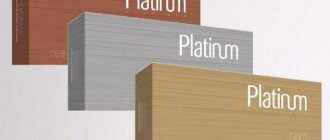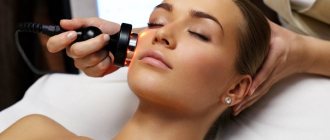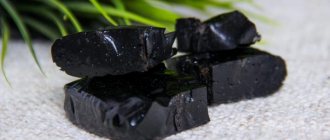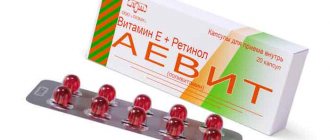No matter how much we would like it, the gradual aging and fading of our skin is inevitable. With age, the number of wrinkles on the face also increases, and the elasticity and youthfulness of the skin disappears. These body processes are irreversible, but regular caring sessions with “beauty injections” will help cope with some age-related problems and restore your skin’s attractiveness and youth.
In aesthetic cosmetology, there are many different anti-aging injections. The most popular of them were biorevitalization and filler injections. This article will help you understand what is their fundamental difference and which procedure is better to choose for facial rejuvenation.
Efficiency of procedures
These two procedures are already well known to many, however, not everyone knows how biorevitalization differs from fillers and what their fundamental difference is.
The main advantage of the first is the launch of the body’s own forces to produce collagen and elastin. And with the help of fillers (fillers), the lost tissue volume is restored.
Biorevitalization
If we translate this term, it sounds something like “natural renewal.” This injection technique allows you to correct the following skin defects:
- reduce wrinkles;
- eliminate dark circles;
- cure acne;
- reduce pigmentation;
- give the skin elasticity, firmness and hydration.
It is mainly used to remove wrinkles on the forehead, around the eyes, on the cheeks and in the corners of the mouth, and in general for general rejuvenation.
Fillers
No less popular are fillers, which, when injected under the skin, fill wrinkles or folds, thereby eliminating them. These products replenish lost volume, so for the most part they are used to correct sunken cheeks, cheekbones, nose or to increase the volume of lips.
Biorevitalization
Injection of gel compositions based on hyaluronic acid.
Indications:
- dryness and dehydration of the skin;
- post-acne;
- decreased skin elasticity;
- small wrinkles;
- dark spots;
- sallow complexion;
- enlarged pores;
- increased skin oiliness.
The first result is noticeable on the 2-3rd day after the first procedure. The skin becomes moisturized, elastic, and lifting is provided. The effect increases within 3-4 weeks and lasts for 6 months, sometimes more than a year.
Contraindications are similar to mesotherapy.
How biorevitalization is carried out in our clinic
Procedure compatibility
Sometimes it happens that the result from the filler is not noticeable and you want to improve the result. Then the question arises: is it possible to do biorevitalization after filling the skin with fillers or even combine these two procedures at the same time?
Many cosmetologists recommend performing filler injections and biorevitalization simultaneously in cases where it is necessary to eliminate several problems at once. First, the filler is introduced and after it has finally taken effect, the second procedure is applied. But how many days after applying the fillers can this procedure be done - the cosmetologist determines, based on the patient’s personal indicators.
The specialist can also prescribe vice versa - fillers after the biorevitalization procedure, if necessary.
Both of these methods are the safest and most effective ways to correct and rejuvenate the face. This is confirmed by reviews and many years of cosmetology activity. A qualified specialist will help you make the right choice, based on the client’s wishes and the condition of his dermis.
Biorevitalization or fillers, which is better?
To decide on the choice of procedures, to find out what biorevitalization or fillers represent, which is better, you should understand the specifics of the procedure. Biorevitalization and fillers are cosmetic procedures based on the point-by-point injection of hyaluronic acid under the skin. But they differ in their mechanism of action. Is it possible to do biorevitalization and inject filler? This is a question that can be resolved by a specialist.
Injections performed with microneedles with substances of a viscous, dense consistency - fillers are designed to smooth out wrinkles and fill voids in the subcutaneous space. The second name for fillers is contour plastic. The effect of this procedure lasts for several months or longer, for which the procedure should then be repeated.
Preparations containing hyaluronic acid are used in procedures such as biorevitalization. But the composition of the substance differs from the components that are used for fillers. The purpose of this technique is to stimulate the production of the active component in a natural way - hyaluronic acid with elastin and collagen. When performing biorevitalization, the substance is absorbed into the subcutaneous layer for 2 weeks, after which restoration and elasticity of the skin is observed.
Sometimes cosmetologists prescribe procedures - biorevitalization and fillers at the same time, or biorevitalization after fillers in order to achieve a more noticeable result, since the external effect of one procedure may be less noticeable. To find out for sure whether fillers and biorevitalization can be done at the same time, specialists determine the extent of the problems, and only then can they give an accurate answer.
When deciding to carry out procedures - biorevitalization and fillers, the difference between the methods also depends on the condition of the patient’s skin. Therefore, you should consult on such issues with experienced cosmetologists, for example, in. Specialists will help you determine during your consultation when biorevitalization can be injected after fillers. The advantages of both procedures are the following:
- acquiring firmness and elasticity of the skin;
- improvement of metabolic process;
- fresh and healthy appearance and complexion;
- correction of facial oval contours and other benefits.
What are their similarities?
The main component for contouring and biorevitalization procedures is hyaluronic acid . From this product, various fillers are then produced, which are injected into the upper layers of the skin. In fact, this drug is only called that and has nothing to do with acid. In simple terms, it is sugar that has the ability to retain moisture in large quantities. It plays an important role in our body by retaining water in the tissues.
Initially, it was extracted from the combs of roosters and was only of animal origin, but over time they learned to synthesize the acid with the help of bacteria that produce it in sufficient volume.
Both of these procedures are aimed at rejuvenating the skin and improving its appearance . The drugs used in these sessions do not cause allergies, so a preliminary drug tolerance test is not necessary.
What is facial biorevitalization?
When contouring, hyaluronic acid solutions are used for injection, as well as biorevitalization. The only difference is in the concentration of the solution and the consistency of the gel. For contouring, dense gels are used; they can fill the missing volume in deep wrinkles. Preparations for biorevitalization are more liquid and cannot serve as fillers. They smooth out fine wrinkles due to a significant increase in hydration.
The composition of the administered drugs and their consistency during biorevitalization and mesotherapy differ significantly, although the method of administration is similar. In mesotherapy, hyaluronic acid is part of the drug used to improve the penetration of the complex of other substances. The basis of biorevitalization products is a structural element of a healthy face: hyaluronic acid, which ensures the healthy appearance of young skin. You can learn about the benefits of peeling and mesotherapy here.
Dry skin begins to age earlier due to chronic dehydration. An effective moisturizer is hyaluronic acid. This substance is also needed in the process of reproduction and growth of epithelial cells. That is, its deficiency is observed with an unhealthy lifestyle, stress, and skin injuries. Artificial administration of the missing substance significantly accelerates recovery.
A premature network of fine wrinkles may appear in deep tanners. Excessive ultraviolet radiation is harmful, even destructive, as well as an external factor that leads to the release of large amounts of free radicals. In addition, in the sun it quickly dehydrates. And intensive replenishment with hyaluronic acid can stop destructive phenomena.
If this is unacceptable for you, there are more gentle methods of facial rejuvenation.
Indications for biorevitalization
- Obvious signs of skin aging, sagging, a network of fine wrinkles.
- Dull, gray, unhealthy appearance.
- Dark spots.
- Dark circles around the eyes.
- Oily skin with enlarged pores, increased sebum secretion.
Most popular: How to remove subcutaneous fat from cheeks and make your face thin
Biorevitalization is carried out by two methods: injection and laser. The injection technique consists of subcutaneous injections of special drugs using a thin needle. The procedure is similar to mesotherapy, but differs in the preparation. In the case of laser biorevitalization, needles and injections are not used. A hyaluronic acid solution is injected under the skin using low-intensity laser radiation. During the process, the patient feels comfortable, the skin is not injured at all. But this procedure is slightly less effective compared to the injection one. Due to difficulties in supplying the solution.
Both methods are very useful, but cosmetologists call injections more effective, and laser more comfortable. The price of one injection biorevitalization procedure depends on the cost of the injected product and dose. The price of one syringe in Moscow can be 5,000 rubles - 17,000 rubles. Biorevitalization is carried out in courses of 3-5 procedures every six months. A break of 2-4 weeks is required between procedures. If the recommendations are strictly followed, a prolonged effect from biorevitalization is ensured. Research has proven that the procedure helps to naturally increase the content of hyaluronic acid. Artificial administration of the drug replenishes its deficiency and simultaneously activates its natural synthesis. And this is a phenomenal property of the drug!
What is the difference between biorevitalization and contour plastic surgery?
There are several cosmetic procedures that are aimed at improving the condition of the skin. Among them, mesotherapy, biorevitalization, and contour plastic surgery stand out; each procedure is accompanied by differences, although there are some common characteristics.
If we consider contour plastic surgery, then hyaluronic acid is introduced in such a form when its molecules are incredibly firmly connected to each other. During biorevitalization, hyaluronic acid molecules are not in a strong bond, so they simply disintegrate into separate building “particles”, on the basis of which natural hyaluronic acid is produced in sufficient quantities. In mesotherapy, hyaluronic acid of animal origin is used, which, unfortunately, is not the same in structure as human one.
If desired, contour plastic surgery can be performed after biorevitalization. There are also the following recommendations:
- Mesotherapy is carried out up to 40 years;
- biorevitalization after 40 years.
A certain interval between contour plastic surgery and biorevitalization must be maintained, the duration of which will be confidently stated by the cosmetologists of the OB clinic salon.
In addition, the specialists of the OB clinic salon will help you understand that mesotherapy, biorevitalization, and contour plastic surgery are better for the client, which will be accompanied by a high level of effectiveness.
Is it possible to combine peeling and biorevitalization?
Combining procedures is an innovation in cosmetology, which allows you to achieve maximum effect and reduce the negative consequences of the effects of active ingredients. Peeling after biorevitalization allows you to get:
- Long-term hydration;
- Improving cell functioning: breathing, restoration of cellular structure, formation of own collagen and elastin;
- Noticeable improvement of facial contours due to skin tightening;
- Dryness, pigment spots, peeling, uneven color, and heterogeneous structure disappear.
Important! The combination should be chosen by women after 35–40 years of age. At this age, cells lose the ability to quickly recover, and skin renewal occurs very slowly, and the first signs of aging appear.
When asked whether it is possible to combine peeling and biorevitalization on the same day, cosmetologists unanimously give a negative answer, since both procedures are too aggressive for delicate skin. There are two options:
- Peeling after biorevitalization;
- Introduction of biorevitalizant after peeling.
If first of all you need to solve the problem of cleansing your face of dead cells, followed by moisturizing and getting rid of puffiness, then choose the first option. When you need to carry out a rejuvenating procedure with additional cleansing, choose the second option.
The main advantage of joint procedures is that the number of required sessions is reduced, since the complex effect leads to the desired result much faster. Most often, an integrated approach includes 3 biorevitalization sessions and 1 peeling session. This is an average figure; the number of visits is always assigned individually.
The duration of recovery periods between sessions depends on what kind of peeling to do after biorevitalization. After harsh chemical peels, you need to allocate 1.5 - 2 weeks for skin restoration. After a retinoic peeling session, the skin is restored within 5 days.










